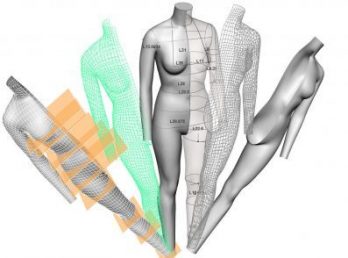

The Body Aspect team are veterans of several major sizing surveys, but is there a case for small companies and freelancers to collect their own data by scanning their customers.
Our team once attended an industry seminar where a person stood up and asked the question: “Where can small clothing companies and consultants access sizing information?” Everybody in the room scratched their chins and a pin-drop could be heard as minds silently whirred. Eventually it became apparent that, despite the proliferation of high-profile sizing surveys since the mid 1990's, there did not seem to be an obvious source of freely available information for smaller companies.
So, given this dearth of publicly available information, what can small retailers do? One option is to take control of the situation and scan your own customers. This enables you to build up an image data set but it also creates an opportunity to build a rapport with customers. Specialists in 3D image capture, such as Body Aspect, can tailor a survey to a company's budget and by adopting a longer term approach to data collection a company can avoid the severe headaches that afflict larger surveys such as logistics, recruitment and disproportionate cost.
However, a common question often surfaces: “How many participants should we include in our survey?” The answer is usually “As many as you can afford.” Measuring and scanning one person is a starting point. Observing the three dimensional body illustrates the proportions and shape of an actual customer. As more people are scanned a picture begins to emerge of the distribution of size and shape. Gradually, this information will inform changes to size charts and can provide new measurements relating to body shape.
But the benefits of collecting data go beyond improvements to a size chart. Specific fit issues can also be addressed. A customised data management system can analyse and interrogate data: view individual 3D body outlines, shape measurements and size measurements; filter subgroups based on age, size or shape and construct 'average' 3D images or virtual mannequins for groups of subjects. Ultimately, there is a benefit for both the company and the customer since better fitting clothes is the common aim, and customers might be interested in being re-scanned periodically to assess how they have changed.
So smaller clothing companies need not despair. A modest budget can help to shed some light on sizing issues - much better than being left in the dark scratching your chin.
(by Graham Hutton)